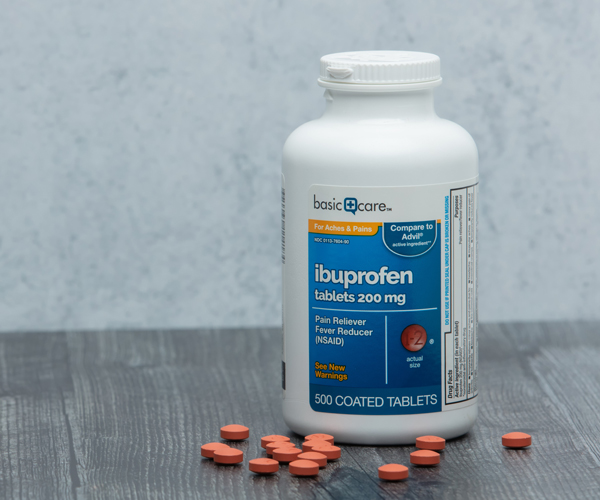New guidelines on treating common muscle and joint injuries
From Newsmax

People with common muscle and joint injuries should skip opioids and instead reach for over-the-counter pain relievers, new treatment guidelines suggest.
The recommendations, from the American College of Physicians and American Academy of Family Medicine (AAFP), cover acute musculoskeletal injuries — woes ranging from sprained joints and strained muscles, to inflamed tendons and whiplash.
The groups say that in general, treatment should start on the conservative end, with pain-relieving creams and gels.
If that’s not enough, common oral painkillers are good options. They include acetaminophen and nonsteroidal anti-inflammatory drugs (NSAIDs), such as ibuprofen and naproxen.
On the other hand, the guidelines discourage prescribing opioids such as OxyContin, Vicodin and Percocet. While the drugs can help with shorter-term pain, they are also potentially addictive and carry a risk of serious side effects.
“Opioids should not be routinely used for acute pain,” said Dr. Timothy Wilt, who chaired the ACP Clinical Guidelines committee.
“Acute” means pain that has been around for less than a month. Other research has found that opioids are also of little use for most cases of chronic pain unrelated to cancer.
That’s not to say no one who is in acute pain should get an opioid prescription. Some people may need the medications for a short time, said Wilt, a professor of medicine at the Minneapolis VA Center for Care Delivery and Outcomes Research.
But in general, he said, the evidence shows “other options are safer and more effective.”
The guidelines, published Aug. 17 in the Annals of Internal Medicine, are based on a review of over 200 clinical trials testing treatments for recent musculoskeletal injuries. Patients had a range of injuries — from sprained ankles to torn hamstrings to whiplash — but did not have low back pain.
A set of 2017 guidelines tackled low back pain, and came to similar conclusions: If medications are used, NSAIDs should be the first choice, said Dr. Gary LeRoy, president of the AAFP.
The new guidelines suggest topical versions of NSAIDs — with or without menthol gel — be tried first.
That emphasis on topical painkillers — and stance on opioids — are good to see, according to Dr. Houman Danesh, a pain management specialist who was not involved in the guidelines.
“It’s important for doctors to feel supported in not using opioids,” said Danesh, who directs the division of integrative pain management at Mount Sinai Hospital in New York City.
With the United States years into an opioid abuse epidemic, medical societies have been advising doctors to rein in their prescribing of the drugs when other options are available.
Yet the drugs are still commonly prescribed for musculoskeletal pain, Wilt said. Danesh agreed, noting that patients sometimes ask for them.
It is true that NSAIDs can have side effects, like stomach upset or internal bleeding — especially if used for a prolonged time. And some people are at increased risk of side effects from NSAIDs or acetaminophen, including older adults and people with heart, kidney or liver disease.
That’s why topical NSAIDs are suggested as a first choice: They have fewer side effects, LeRoy said.
On balance, though, NSAIDs and acetaminophen are safer than opioids, and often ease acute pain, the guidelines say.
Danesh did note that inflammation is part of the body’s natural response to acute injury. And in general, he said, he tells patients that if the pain is tolerable, they can see how they do without oral NSAIDs.
There are non-drug options, too, LeRoy said.
Two were singled out in the recommendations: acupressure and transcutaneous electrical nerve stimulation. Trials show they help ease pain and — in the case of acupressure — may improve people’s physical functioning.
Some others — like physical therapy and massage — were not cited in the guidelines but might help some people, according to LeRoy.
The good news is musculoskeletal pain usually wanes within four to six weeks, according to Danesh. “If it doesn’t,” he said, “you may need a referral to someone like me.”
Ultimately, Danesh said, it’s best to try to figure out the root cause of musculoskeletal pain. If imbalances in muscle strength or unconscious postural habits are underlying the pain, that should be addressed.
© HealthDay
RFor more on this story go to: NEWSMAX




